| Launch:2023-11-14 |
Radiation dose
Radiant energy
Like electromagnetic radiation, optical radiation is also a way of energy transmission. The energy emitted, transmitted or received in the form of electromagnetic radiation is called radiant energy, which is usually represented by the character Qe.
Unit: Joule (J).
Radiation flux
The radiant energy emitted and received per unit time is called radiation flux, which is usually expressed by Φ e. If the radiant energy emitted, transmitted or received in dt time is dQe, then the corresponding radiation flux is Φ e=dQe/dt.
Unit: Watt (W).
Radiant degree
The radiation flux per unit emission area of the radiation source is defined as the radiation degree of the radiation source, expressed as Me, and the radiation flux of the micro-area dA of the radiation source is assumed to be dΦe, then the radiation degree Me=dQe/dA.
Unit: watts per square meter (W/m2).
Irradiance
Irradiance, also known as irradiance, is the radiation flux per unit area of the illuminated surface. Assuming that the radiation flux emitted by the micro-area dA of the illuminated surface is dΦe, then the irradiance Ee= is Ee= / dA.
Unit: watts per square meter (W/m2).
Radiation strength
The point radiation source emits radiation to all sides. In a certain direction, the radiation flux in the element solid angle d Ω is d Φ e, then the radiation intensity Ie=dQe/d Ω.
Unit: watt per spherical degree (W/sr).
Radiance
In order to characterize the spatial distribution of radiation flux of a radiation source with finite size, the radiation amount of "irradiance" is adopted. The radiation quantity of the element area is dA, and the radiation flux in the element solid angle d Ω is dΦe in the direction of θ angle to the normal N, then the radiance Le=dΦe/cosθdAdΩ. Therefore, it can be considered that the radiance of the element area dA in the θ direction is the radiation flux emitted by the unit projection area of the radiation surface on the plane perpendicular to the θ direction.
Unit: Watt per spherical square meter [W / (sr ·m2)].
Optical quantity
Luminous flux
The amount of visual stimulation of scale visible light to the human eye is called luminous flux, which is usually expressed as Φ v.
Unit: lumen (lm).
Light emitting degree
The luminous flux per unit luminous area of the light source is defined as the light emitting degree of the light source. It is assumed that the luminous flux emitted by the light emitting area dA of the light source is dΦv, then the light emitting degree Mv= denerv / dA.
Unit: lumens per square meter (lm/m2).
Illuminance
The luminous flux per unit irradiated area is defined as illuminance. Assuming that the luminous flux accepted on the micro-area dA of the illuminated surface is d Φ v, then the illuminance on the micro-surface Ev= dazzv / dA.
Unit: lx.
Luminous intensity
The point light source emits visible light in all directions, and in a certain direction, the luminous flux in the element solid angle d Ω is d Φ v, then the luminous intensity of the point light source in that direction is Iv=d Φ vUnip d Ω.
Unit: cd.
Luminance
In order to describe the spatial distribution of visible light emitted by a luminous body with finite size, an optical quantity such as brightness is adopted. If the luminous surface area dA is at a θ angle to the normal line N of the luminous surface, and the luminous flux in the elemental solid angle d Ω is d Φ v, then the luminance Lv=Iv/cos θ dA, that is, the luminance of the elementary luminous surface dA in the θ direction is equal to the ratio of the luminous intensity Iv of the element area dA in the θ direction to the projection cos θ dA of the element area on the plane perpendicular to the direction.
Testing principle
The measurement of irradiance needs a standard light source with known radiation energy distribution, and the spectral radiation energy distribution curve of the object can be measured by calibrated standard light source and optical fiber spectrometer. Through the radiation energy distribution curve, the parameters such as irradiance and radiation flux can be further calculated.
Test example
Irradiance Test of LED Light Source.
As one of the most important light sources today, LED is infiltrating into all levels and corners of society with its unique characteristics. LED industry needs to accurately measure the optical properties of LED when it produces a variety of colors and luminance in large quantities. With the rapid development of LED industry, a variety of LED products have emerged, so for different applications, the sorting and quality control of LED,LED will be selected according to the luminous wavelength and color parameters of LED.
Due to the unique size of the LED luminous surface, it is difficult to homogenize its luminescence. The configuration of reducing light loss by using an integrating sphere is suitable for most LED measurement applications. The integrating sphere is a very simple component for optical radiation measurement. The inner surface of the integrating sphere has perfect scattering, and the light is uniformly reflected on its inner surface. The radiant light becomes so uniform after many reflections on the inner surface that the radiation at any point on the spherical wall is the same. The combination of integrating sphere and spectrometer greatly improves the reproducibility of LED measurement.
Principle
LED is the abbreviation of lightemittingdiode (light emitting diode). It belongs to solid-state light source and its basic structure is a piece of electroluminescent semiconductor material. Gallium arsenide is usually used in red light, silicon nitride in yellow light, gallium phosphide in green light and gallium nitride in blue light. The semiconductor luminous material is placed on a shelf with leads and sealed with epoxy resin to protect the internal core wire.
The structure of LED is shown in figure 1, which is mainly divided into substrate, epitaxial layer, transparent contact layer, P-type and N-type electrode, passivation layer. The core part of the light-emitting diode is a wafer composed of P-type semiconductors and N-type semiconductors. electrons diffuse from N region to P region, and holes from P region to N region. With the progress of this diffusion, a high e Δ V potential barrier is formed at the Pmure N junction to prevent the further diffusion of electrons and holes and achieve equilibrium.
When a certain voltage V is applied to the semiconductor material, and the P-type material is connected to the positive electrode and the N-type material is connected to the negative electrode, the electrons and holes will overcome the potential barrier at the Pmure N junction and flow to the P region and N region respectively. In the Pmurn junction, the electron combines with the hole, the electron transitions from the high energy level to the low energy level, and the electron releases the excess energy in the form of emitting photons, resulting in the phenomenon of electroluminescence, which is the luminescence principle of light-emitting diodes. Due to the different bandgap width of semiconductor materials, semiconductors with different bandgap show different colors, and the luminous intensity becomes stronger with the increase of current intensity in a certain range.
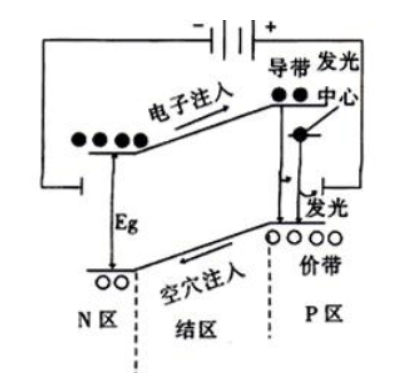
Figure 1. Schematic diagram of diode carrier movemen
Main characteristics of diodes
Spectral distribution, peak wavelength
The light emitted by LED is not a single wavelength, its wavelength has the characteristics of normal distribution, and the wavelength at the maximum power is the peak wavelength.
Irradiance
Irradiance represents the amount of radiant energy received per unit area per unit time on the surface irradiated by radiant energy, that is, the radiation flux density on the irradiated surface.
Radiance
The radiance represents the physical quantity of the radiation intensity of a certain point on the surface radiation source in a certain direction, which refers to the energy radiated by the surface radiation source through the unit area and unit solid angle in the normal direction of the vertical surface element in unit time, that is, the radiation flux of the radiation source in the unit projection area and unit solid angle.
Color coordinate
Color coordinate is one of the important contents of colorimetry. The measurement of color coordinate of light source is one of the important methods to study the characteristics of light source, and it has extensive application significance. The basic principle of color coordinate measurement is calculated according to the spectral distribution of light source and the basic provisions of color coordinates.
Luminous flux
The part of the radiation flux emitted by LED light source that can cause human vision is called luminous flux, which refers to the radiation flux emitted by LED to the whole space per unit time. In order to collect all the optical radiation energy emitted by LED, the optical signal can be collected through the integrating sphere, and the structure of the integrating sphere is shown in figure 2. The integrating sphere is a spherical cavity, and the surface of the cavity is usually coated with a white coating so that the light signal can be reflected many times inside, so that the internal light is uniformly distributed. A detector is placed on the other side of the LED to linearly convert the collected light signal into an electrical signal, and the screen in the middle of the integrating sphere can prevent the light source from shining directly on the detector.
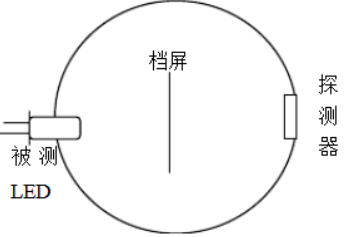
Figure 2. Schematic diagram of the structure of the integrating sphere
Color temperature
There are great differences in spectral power distribution among different light sources due to different luminous materials. a certain spectral power distribution is shown as a corresponding light color. people use different light colors emitted by blackbody heating to different temperatures to express the color of a light source, which is called the color temperature of the light source, or color temperature for short.
External quantum efficiency
When light is incident on the surface of the photosensitive device, some photons will excite the photosensitive material to produce electron hole pairs and form electric current. The ratio of the collected electrons (through internal electron hole recombination, etc.) to all incident photons is called external quantum efficiency. External quantum efficiency is one of the main performance indexes of photodetectors.
Experimental equipment.
The instruments required for this experiment are shown in the following table:

MS11639 fiber spectrometer
MS11639 is an optical fiber spectrometer with a spectral range of 200nm-1100nm. The detector uses Hamamatsu COMS detector, 16-bitA/D sampling and 75% quantum efficiency to provide the spectrometer with high signal-to-noise ratio and large dynamic range. The spectrometer has good response performance in UV-VIS-NIS. Compared with common products, double blazed gratings are used to optimize the spectral response of UV and NIR bands, improve the sensitivity and efficiency of the spectrometer, and effectively reduce stray light by 50%. The MS11639 spectrometer with double blazed grating can effectively balance the full spectrum response and can be widely used in physical and chemical analysis, biological samples, semiconductor material detection, optical detection and material detection and other fields.
Compared with the traditional CCD detector, the application of CMOS detector has a better response in the ultraviolet band. The use of ultraviolet differential absorption spectroscopy is very suitable for the detection of nitric oxide and sulfur dioxide. MS11639 has good thermal stability and can be used in qualitative and quantitative detection scenes because of its spectral wavelength shift < 0.1nm at 0-40 ℃.
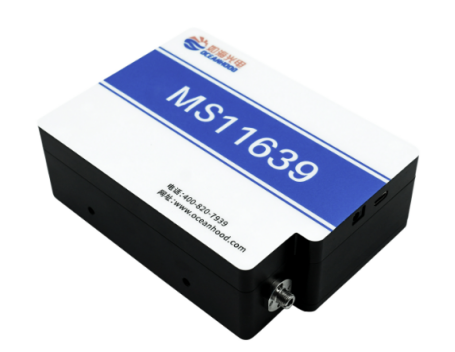
Uspectralplus spectrum software
With the integration of spectral acquisition, viewing and analysis, one-click radiance and photometric parameters such as irradiance, radiation flux and irradiance can be calculated. Its measurable parameters are shown in figure 3.
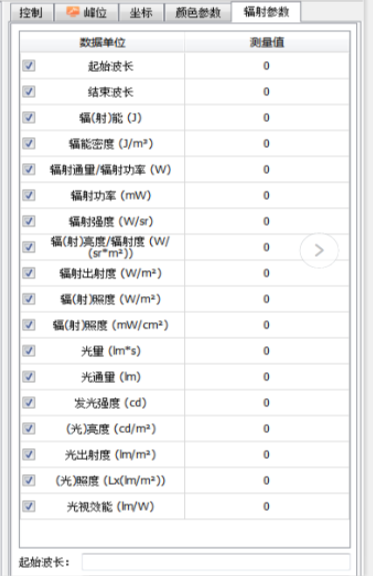
Figure 3. Software radiation parameter interface
Experimental design
Device connection
The LED light source is fixed on the integrating sphere, and the integrating sphere is connected to the spectrometer with an optical fiber in the vertical direction of the LED light source. The LED power is connected and the spectrometer is connected to the computer with a data line.
Spectrum acquisition
The main results are as follows: (1) Open the Uspectralplus software and select the irradiation mode.
(2) illuminate the LED light source, click the continuous acquisition button to select the appropriate integration time and times.
(3) turn off the LED light source, click on a single acquisition, and save it as a dark spectrum after the acquisition is completed.
(4) Light up the LED light source, wait for the light source to stabilize for a few minutes, then click on a single measurement to get the spectrum of the LED light source. The light source color coordinates, light intensity and other data can be read from the result interface on the right side of the software.
Experimental data.
The experimental results are shown in figure 4:
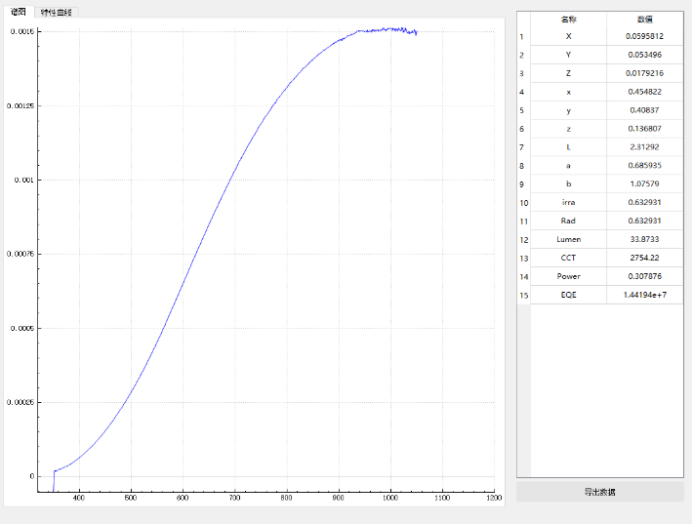
Figure 4.LED irradiance test result chart
The color information can be read from the table on the right side of figure 4, and the irradiance Irra=0.6329, irradiance Rad=0.6329, luminous flux Lumen=33.8733, color temperature CCT=2754.22, power Power=0.3079 and external quantum efficiency EQE=1.4419e+7 are known from the table.
Experimental results.
The experimental results show that the LED measurement system built by integrating sphere and optical fiber spectrometer can quickly and easily measure the color coordinates, irradiance, irradiance, luminous flux, color temperature, power, external quantum efficiency and other data of LED light source.

